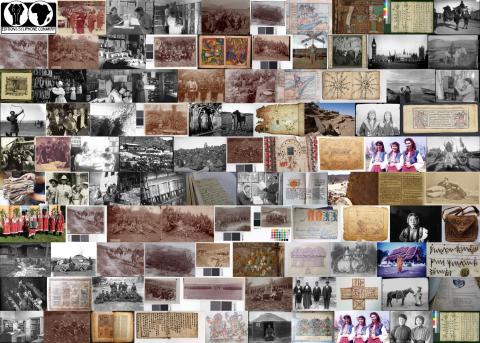
Aims and objectives
The Archives for Cinema, Photography and Sound Recording in Mongolia houses over 160,000 photo negatives, including 10,552 glass plate negatives. This project aims to digitise all these glass plate negatives, the majority of which contain images taken between 1921 and 1945 and have never been printed. The collection covers a wide range of topics such as the army and military, public health, animal husbandry, archaeological finds, nature, prominent Mongolian people, people who were politically repressed during the 1930s, historical documents, construction works, industrial development, Mongolia's contribution to the victory of WWII, culture, religion and politics.
The collection is housed in the Archives building, which has no adequate and controlled preservation environment and lacks humidity and air control. The glass plates are kept in paper envelopes on shelves where they are exposed to physical mishandling and deterioration in image quality. Only 3,000 have been catalogued. Since no digital images are available to researchers and the general public, these glass plates are in danger of being exposed to frequent printing which represents a threat to the physical condition of the originals themselves. Once degraded in quality or detroyed due to frequent printing and mishandling, this unique pre-industrialised history of Mongolia will be lost for ever.
As the originals will eventually be too fragile for frequent handling, the only way of preserving and providing access to users of this valuable collection is through digitisation. The remaining 7,000 glass plates will also be catalogued. Training schemes will be developed to preserve and further restore archival photographs and the introduction of this digital archive will inspire the Archives, the MSV Foundation and other individuals to carry out further projects to help preserve and digitise the remaining archival holdings.
Outcomes
Research and a visual inspection have been carried out on over 7,000 uncatalogued “orphan” glass negative plates and a bulk of them have been cleaned from dirt, dust and paints.
A total of 10,089 glass negative plates have been digitised. Uncatalogued digitised images have been sorted out either into existing or new collections of the Archives thus enriching its catalogued photographic contents.
Some Archives’ staff have received professional training in digitising technology as well as in digital archives handling. The successful implementation of the project serves to testify that cooperation between the Archives and other national cultural bodies, including MSV Foundation, is vital for the future in preserving and restoring the Archives’ stocks.
This has been the first ever major project funded by foreign institutions and a great challenge for the MSV Foundation. It is considered that the project has been a great success which will certainly add to the good reputation of the Foundation locally.
Thanks to the project, the MSV Foundation will be able to bring more and more historic film and photographic enthusiasts closer together in safeguarding the nation’s cinematographic and photographic heritage.
The original glass negative plates are still housed in the Archives for Cinema, Photography and Sound Recording. Digital copies have been deposited with the Archives, MSV Foundation and the British Library.
The records copied by this project have been catalogued as:
-
EAP264/1 Digital copies of glass plate negatives preserved in the Archives for Cinema, Photography and Sound Recording, Mongolia [1910s-1950s]
Due to the cyber-attack on the British Library in October 2023, the archives and manuscripts database is currently inaccessible and we are unable to provide links to the catalogue records for this project.
Blogs:
- Spiked fiddles from Mongolia - July 2015
- Year of the Horse – January 2014
- Mongolia at a glance – October 2013




